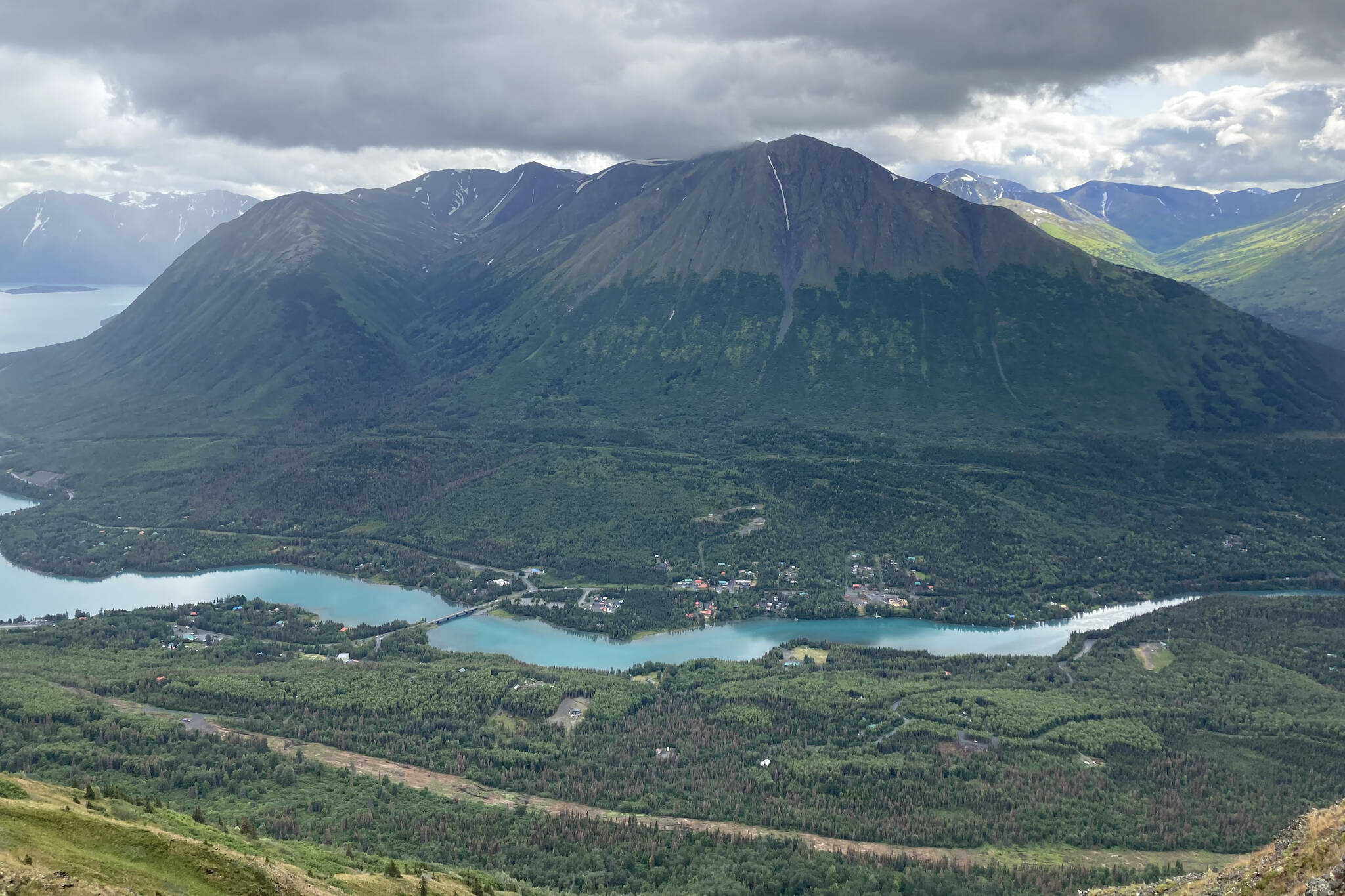The cost of the Cooper Landing bypass project has more than doubled over the last five years and the State of Alaska is working to find new funding sources for the project, the Alaska Department of Transportation and Public Facilities said last week.
The long-planned project aims to reduce traffic congestion through Cooper Landing by adding 10 miles of new road starting at Milepost 46.5 of the Sterling Highway. The new section of highway will cross Juneau Creek via a steel arch bridge before rejoining the highway around Milepost 56. As of May 2023, the project was scheduled to be complete in 2027.
In all, the Alaska Department of Transportation and Public Facilities estimates that the project will cost about $840 million — up from $350 million in 2018.
The project is one of many described by a newly published State of Alaska outline of transportation projects it plans to fund over the next four years. A draft of the plan, called the Statewide Transportation Improvement Program, was published last week and the state is looking for resident input on the projects that are included.
Between 2022 and 2023 the department estimates that the cost of the Cooper Landing Bypass Project, also called the Sterling Highway Milepost 45-60 Project, increased by 18% — or by about $150 million. The resulting funding shortfall now has the department looking for new ways to keep the project on track while not letting it and others fall behind.
The draft document distinguishes the Juneau Creek bridge, where the bypass will cross Juneau Creek, from the realignment and reconstruction of the highway.
Construction of the supportive ends of the Juneau Creek bridge is expected to start next year, with the rest of bridge construction continuing through 2026. When completed, the bridge, as currently designed, will be the longest single-span bridge in Alaska.
Per the draft plan, the Juneau Creek Bridge is estimated to cost $165 million and will be paid for by both the federal government and the State of Alaska. In all, the state of Alaska expects to contribute about $14.9 million, while the federal government will pay for about $150.1 million.
The department expects another $330 million will be used between 2027 and 2029 for the reconstruction and realignment of the highway, on which construction started in 2019.
In light of the projected funding shortfall, the department said it is evaluating grant opportunities and “innovative financing” as a way to keep advancing the project “without having to delay hundreds of other transportation projects statewide over the next three years.”
Shannon McCarthy, a media liaison with the Alaska Department of Transportation and Public Facilities, said Monday that the department intends to pursue grant opportunities newly made available through the Infrastructure Investment and Jobs Act, also known as the bipartisan infrastructure law.
Such grants include a “Mega Grant,” which McCarthy said are meant to fund large and complex infrastructure projects, and other opportunities as made available through the bipartisan infrastructure law.
The department had originally planned to fund construction of the Juneau Creek bridge and the final project phase at the same time. Because of the increase in costs, those two elements will now occur in different years.
“Originally both the bridge and Phase 1B were going to be built concurrently — which would have required approximately $495 million in a single year, severely limiting our ability to construct other road or trail projects in the state,” McCarthy said. “The extra time will allow us to pursue the additional funding, outside of our annual federal allocation.”
Work on the first phase of the project, including establishing the roadway embankment and construction of wildlife crossings, is expected to be “substantially complete” by the end of next summer, McCarthy said.
Alaska Department of Transportation and Public Facilities Deputy Commissioner John Binder, who also serves as the department’s acting central regional director, attributed the cost increase to inflation.
“Alaska DOT&PF has seen inflationary pressures on construction costs throughout the state over the past two years,” Binder said. “We will be making considerable effort to ensure we can keep the project on schedule despite these challenges.”
The draft Statewide Transportation Improvement Program document describes transportation projects the State of Alaska wants to tackle between 2024 and 2027.
Other projects that the document describes on the Kenai Peninsula include $4.2 million for the reconstruction of Marydale Avenue in Soldotna, $38 million for long-term erosion mitigation on the Homer Spit and $2.5 million worth of pedestrian improvements to the Kenai River Flats.
The draft document, which functions similarly to local capital improvement plans, outlines state transportation projects and programs the state has scheduled for completion over the next four years.
“The STIP serves as a guiding document for project development and funding allocation, outlining priorities and schedules for transportation projects to ensure efficient and effective resource allocation,” the draft document says. “It is an indispensable tool that shapes both the present and future of Alaska’s transportation infrastructure.”
The Alaska Department of Transportation and Public Facilities is accepting feedback on the draft plan through Sept. 3. Public comments can be submitted at dot.alaska.gov/stip and by text at 855-925-2801.


